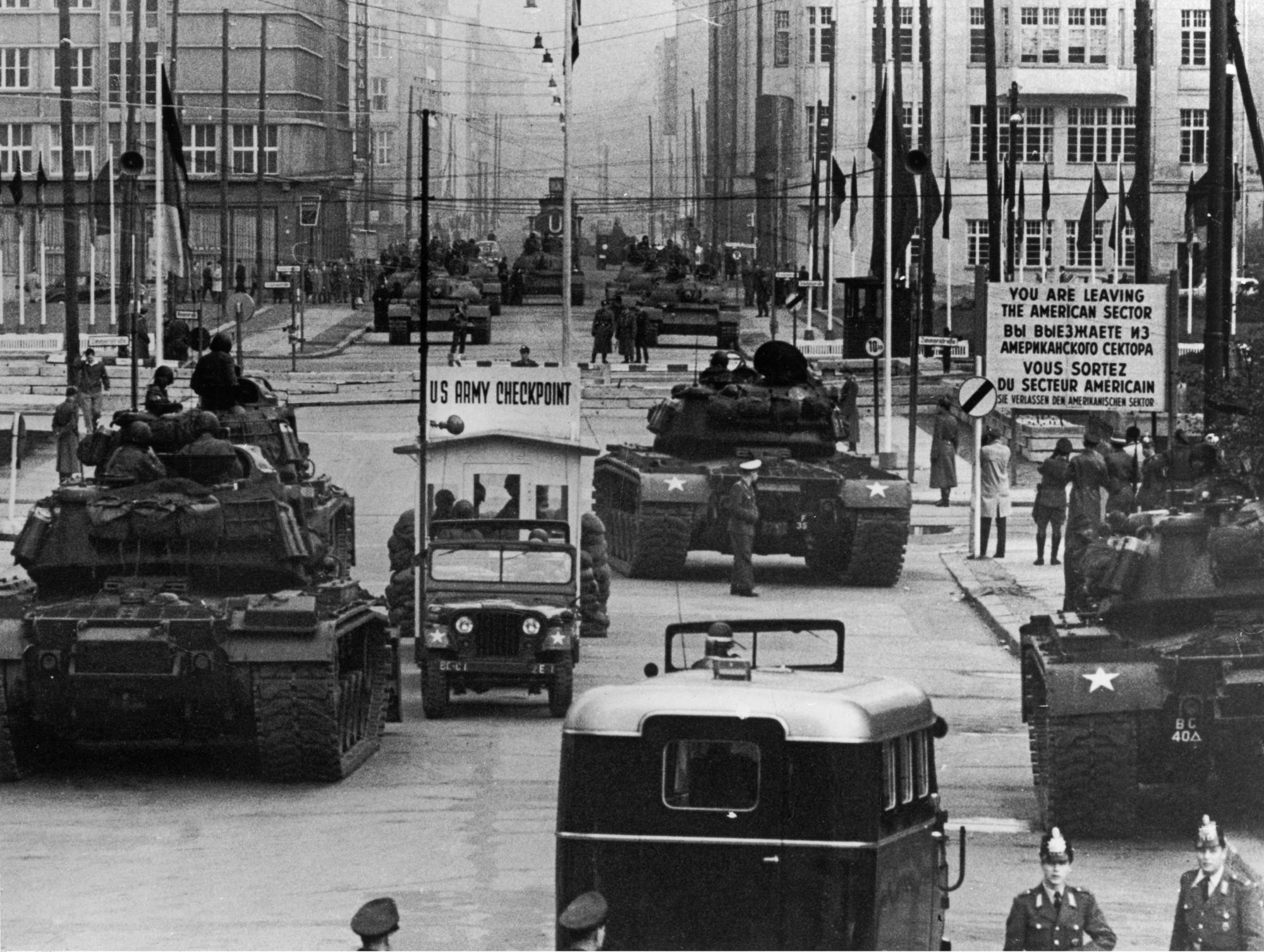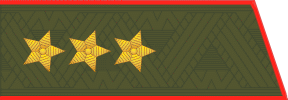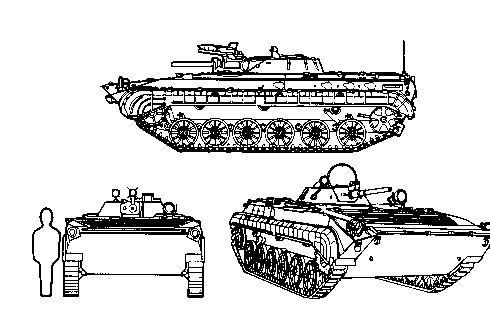|
26th Tank Regiment
The 26th Tank Feodosia Order of Alexander Nevsky Regiment (russian: 26-й танковый Феодосийский ордена Александра Невского полк) is an element of the Russian Ground Forces formed out of the armored core of the disbanded 6th Tank Brigade. It is part of the 47th Tank Division. History World War II and Germany The unit traces its history back to the 244th Separate Tank Regiment of the Red Army. The 244th Separate Tank Regiment was created in 1943. It participated in combat operations as part of the North Caucasian Front and the Separate Coastal Army. After the war in November 1945, it was transformed into the 26th Tank Regiment and became part of the 19th Guards Mechanized Division. After 1957, it was part of the 26th Guards Tank Division. Before the dissolution of the USSR, it was stationed in Hillersleben, German Democratic Republic as part of the 47th Guards Tank Division. The regiment was armed with 95 T-64, 55 infantry fi ... [...More Info...] [...Related Items...] OR: [Wikipedia] [Google] [Baidu] |
Soviet Army
uk, Радянська армія , image = File:Communist star with golden border and red rims.svg , alt = , caption = Emblem of the Soviet Army , start_date = 25 February 1946 , country = (1946–1991)' (1991–1992) , branch = , type = Army , role = Land warfare , size = 3,668,075 active (1991) 4,129,506 reserve (1991) , command_structure = , garrison = , garrison_label = , nickname = "Red Army" , patron = , motto = ''За нашу Советскую Родину!(Za nashu Sovetskuyu Rodinu!)''"For our Soviet Motherland!" , colors = Red and yellow , colors_label = , march ... [...More Info...] [...Related Items...] OR: [Wikipedia] [Google] [Baidu] |
47th Guards Tank Division
The 47th Guards Tank Division () is a tank division of the Russian Ground Forces. It was formed in October 1942, during World War II from the first formation of the 154th Rifle Division as the 47th Guards Rifle Division. It served with the 8th Guards Army from late 1943. In late 1945, the division was converted into the 19th Guards Mechanized Division as part of the Group of Soviet Occupation Forces in Germany. It was ultimately relocated to Hillersleben as part of the 3rd Shock Army (later the 3rd Army) and served there with the Group of Soviet Forces in Germany for the rest of the Cold War, being converted to the 26th Guards Tank Division in 1957 and renumbered to restore its original number in 1965. Disbanded in 1997, the division was reestablished in 2022. World War II The 47th Guards Rifle Division was formed on 20 October 1942 by the conversion of the first formation of the 154th Rifle Division for the latter's "courage and heroism" during the Kozelsk Offensive. It ... [...More Info...] [...Related Items...] OR: [Wikipedia] [Google] [Baidu] |
Alexander Zhuravlyov
Colonel General Alexander Alexandrovich Zhuravlyov (russian: Александр Александрович Журавлёв; born 5 December 1965) is a Russian Ground Forces officer who has commanded the military force in Syria during the Russian military intervention in the Syrian Civil War and served as the commander of the Western Military District from November 2018 to June 2022. After returning from Syria, he became the Deputy Chief of the General Staff before being appointed commander of the Eastern Military District in November 2017. He was also awarded the title Hero of the Russian Federation in 2016 by a directive of the President. Currently, Western nations have identified him as a war criminal in Ukraine, and have imposed sanctions on him. Biography Early career (2008-2021) He was born in the town of Golyshmanovo, in the Tyumen Oblast, in 1965. In 1982, Zhuralvyov finished secondary school and joined the Soviet Army. He graduated from the in 1986 and the Ma ... [...More Info...] [...Related Items...] OR: [Wikipedia] [Google] [Baidu] |
Russian Armed Forces
The Armed Forces of the Russian Federation (, ), commonly referred to as the Russian Armed Forces, are the military forces of Russia. In terms of active-duty personnel, they are the world's fifth-largest military force, with at least two million reserve personnel. Their branches consist of the Ground Forces, the Navy, and the Aerospace Forces, as well as three independent arms of service: the Strategic Rocket Forces, the Airborne Forces, and the Special Operations Forces. In 2021, Russia had the world's fifth-highest military expenditure at . The Russian Armed Forces possess the world's largest stockpile of nuclear weapons. They operate the second-largest fleet of ballistic missile submarines, and are one of only three national militaries (alongside those of the United States and China) that operate strategic bombers. With certain exceptions, Russian law mandates one year of military service for all male citizens aged 18–27, though conscripts are generally no ... [...More Info...] [...Related Items...] OR: [Wikipedia] [Google] [Baidu] |
BMP-1KSh
The BMP-1 is a Soviet amphibious tracked infantry fighting vehicle, in service 1966–present. BMP stands for ''Boyevaya Mashina Pyekhoty 1'' (russian: link=no, Боевая Машина Пехоты 1; БМП-1), meaning "infantry fighting vehicle, 1st serial model". The BMP-1 was the first mass-produced infantry fighting vehicle (IFV) of the Soviet Union. It was called the M-1967, BMP and BMP-76PB by NATO before its correct designation was known. The Soviet military leadership saw any future wars as being conducted with nuclear, chemical and biological weapons. A new design, like the BMP, combining the properties of an armored personnel carrier (APC) and a light tank would allow infantry to operate from the relative safety of its armoured, radiation-shielded interior in contaminated areas and to fight alongside it in uncontaminated areas. It would increase infantry squad mobility, provide fire support to them, and also be able to fight alongside main battle tanks. The BMP-1 ... [...More Info...] [...Related Items...] OR: [Wikipedia] [Google] [Baidu] |
2S12
The 2S12 "Sani" ("sleigh") (GRAU index 2S12) is a 120 mm heavy mortar system used by the Russian Army and other former Soviet states. First fielded in 1981, the 2S12 is a continued development on the towed mortars first used in World War II. Design 2S12 is in fact the designator for the combination of the 2B11 "Sani" heavy mortar with its transport vehicle 2F510, a GAZ-66-15 4×4 truck. The 2B11 weighs nearly 200 kg (500 lb) when fully assembled, and thus must be mounted to the 2×1 wheeled chassis 2L81 and towed to the emplacement site by the truck. The GAZ-66 prime mover also transports the ammo load: 24 crates of 120mm HE mortar bombs, 2 bombs per crate, for a total of 48 available rounds. Once on site, it is unloaded from the transport chassis and manually emplaced by the crew of 5. It is the largest caliber indirect artillery employed at the battalion level. There is also an improved model, the 2B11M, that can fire the laser-guided round "Gran" with a range ... [...More Info...] [...Related Items...] OR: [Wikipedia] [Google] [Baidu] |
BTR-60
The BTR-60 is the first vehicle in a series of Soviet eight-wheeled armoured personnel carriers (APCs). It was developed in the late 1950s as a replacement for the BTR-152 and was seen in public for the first time in 1961. BTR stands for ''Bronetransporter'' (БТР, Бронетранспортер, literally "armoured transporter"). History Origins The BTR-152 and BTR-40, the first two Soviet mass-produced APCs developed after the Second World War, gave the Soviet Army useful experience with wheeled armoured personnel carriers. However, even as they were designed, they were not suited for the needs of the Soviet Army as they lacked a roof (which was added in later versions designated BTR-152K and BTR-40B respectively). The low combat values of the BTR-152 and BTR-40 were exposed when the Egyptian Army used them during the Suez Crisis and also when the Soviet Army used them in the fighting on the streets of Budapest during the Hungarian Revolution of 1956. These were amon ... [...More Info...] [...Related Items...] OR: [Wikipedia] [Google] [Baidu] |
BTR-70
The BTR-70 is an eight-wheeled armored personnel carrier (russian: бронетранспортер/ ''Bronetransporter'', or literally "Armoured Transporter") originally developed by the Soviet Union during the late 1960s under the manufacturing code GAZ-4905. On August 21, 1972, it was accepted into Soviet service and would later be widely exported. Large quantities were also produced under license in Romania as the ''TAB-77''. The BTR-70 was developed as a potential successor for the earlier BTR-60 series of Soviet wheeled armored personnel carriers, specifically the ''BTR-60PB'', which it most closely resembled. It evolved out of an earlier, unsuccessful project known as the ''GAZ-50'' to design a new wheeled infantry fighting vehicle on the chassis and drive train of a BTR-60PB. It initially received the NATO reporting name ''BTR M1970''. Development History In 1971, the Soviet Armed Forces began investigating the possibility of an updated BTR-60PB redesigned to make the ... [...More Info...] [...Related Items...] OR: [Wikipedia] [Google] [Baidu] |
BRM-1K
This is a complete list of variants and designations of the BMP-1 infantry fighting vehicle (IFV). It is sorted by country of origin. Variants Soviet Union Infantry fighting vehicles * BMP (Ob'yekt 764) – The original main prototype of the BMP-1 was developed by the design bureau of the Chelyabinsk Tractor Works (ChTZ) and built in 1965. In comparison with Ob'yekt 765Sp1, Ob'yekt 764 was 4 mm higher, had a maximum swimming speed of 10 km/h, a lower maximum range (550 km on road) and a reduced number of firing ports for its passenger's armament (six). The vehicle had a curved shock-absorber behind the first road wheel and the rear fender and two tool stowage boxes on the fenders. To start production of the new vehicle, the design of the fighting and troop compartments were improved. Unlike the BMP-1, Ob'yekt 764 used a waterjet for swimming, which was removed to save space inside the vehicle. Ob'yekt 764 also had a larger main fuel tank, while the BMP-1 had th ... [...More Info...] [...Related Items...] OR: [Wikipedia] [Google] [Baidu] |
BMP-1
The BMP-1 is a Soviet amphibious tracked infantry fighting vehicle, in service 1966–present. BMP stands for ''Boyevaya Mashina Pyekhoty 1'' (russian: link=no, Боевая Машина Пехоты 1; БМП-1), meaning "infantry fighting vehicle, 1st serial model". The BMP-1 was the first mass-produced infantry fighting vehicle (IFV) of the Soviet Union. It was called the M-1967, BMP and BMP-76PB by NATO before its correct designation was known. The Soviet military leadership saw any future wars as being conducted with nuclear, chemical and biological weapons. A new design, like the BMP, combining the properties of an armored personnel carrier (APC) and a light tank would allow infantry to operate from the relative safety of its armoured, radiation-shielded interior in contaminated areas and to fight alongside it in uncontaminated areas. It would increase infantry squad mobility, provide fire support to them, and also be able to fight alongside main battle tanks. The B ... [...More Info...] [...Related Items...] OR: [Wikipedia] [Google] [Baidu] |
BMP-2
The BMP-2 (''Boyevaya Mashina Pekhoty'', , literally "combat machine/vehicle (of the) infantry") is an amphibious infantry fighting vehicle introduced in the 1980s in the Soviet Union, following on from the BMP-1 of the 1960s. Development history Although the BMP-1 was a revolutionary design, its main armament, the 2A28 Grom and the 9S428 ATGM launcher capable of firing 9M14 Malyutka (NATO: AT-3A Sagger A) and 9M14M Malyutka-M (NATO: AT-3B Sagger B) ATGMs, quickly became obsolete. Therefore, the Soviet Union decided to produce an updated and improved version of the BMP-1. The main emphasis was put on improving the main armament. In 1972, work got under-way to develop an improved version of the BMP-1. During its combat debut in the Yom Kippur War, Egyptian and Syrian BMPs proved vulnerable to .50 calibre machine-gun fire in the sides and rear, and to 106 mm M40 recoilless rifles. The 2A28 Grom, 73 mm gun proved inaccurate beyond 500 metres, and the 9M14 Malyut ... [...More Info...] [...Related Items...] OR: [Wikipedia] [Google] [Baidu] |
T-64
The T-64 is a Soviet tank manufactured in Kharkiv, and designed by Kharkiv Morozov Machine Building Design Bureau. The tank was introduced in the early 1960s. It was a more advanced counterpart to the T-62: the T-64 served in tank divisions, while the T-62 supported infantry in motorized rifle divisions. It introduced a number of advanced features including composite armour, a compact engine and transmission, and a smoothbore 125-mm gun equipped with an autoloader to allow the crew to be reduced to three so the tank could be smaller and lighter. In spite of being armed and armoured like a heavy tank, the T-64 weighed only . Soviet military planners considered the T-64 the first of the third-generation tanks and the first main battle tank. These features made the T-64 expensive to build, significantly more so than previous generations of Soviet tanks. This was especially true of the powerpack, which was time-consuming to build and cost twice as much as more conventional design ... [...More Info...] [...Related Items...] OR: [Wikipedia] [Google] [Baidu] |






.jpg)